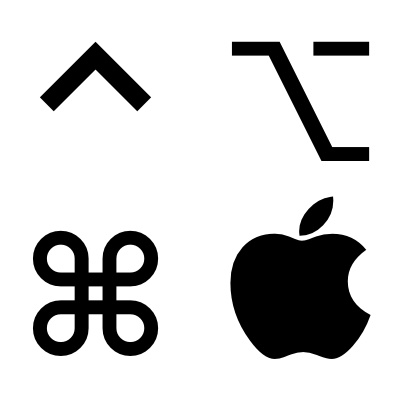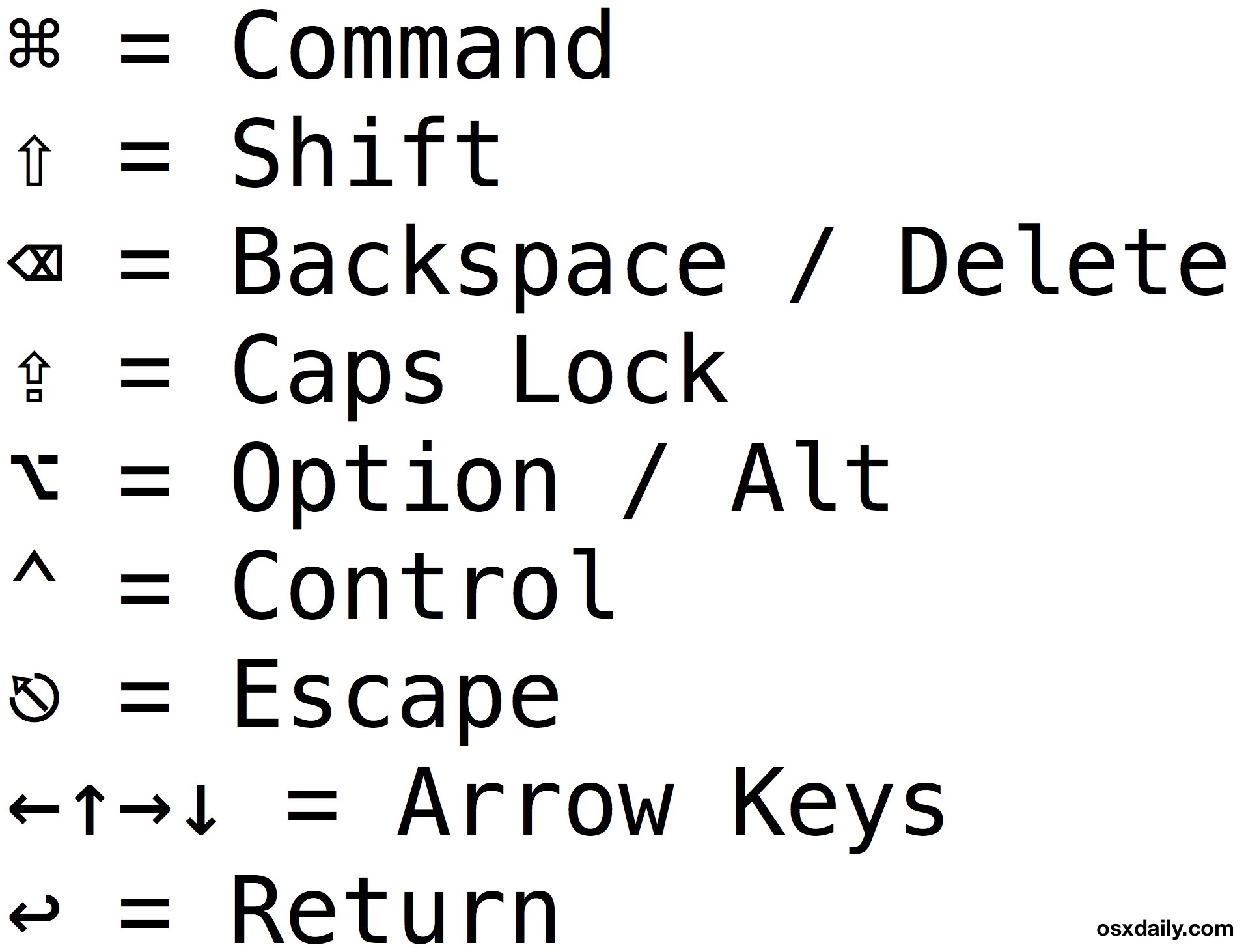

- #How to i enter the mac command key symbol software
- #How to i enter the mac command key symbol plus
- #How to i enter the mac command key symbol series
- #How to i enter the mac command key symbol windows
The ⌘ symbol came into the Macintosh project at a late stage. The Macintosh keyboard's other unusual modifier key, the Option key, serves as a modifier both for entering keyboard shortcuts and for typing text-it is used to enter foreign characters, typographical symbols, and other special characters.

(Indeed, the very first Macintosh lacked a Control key it was soon added to allow compatible terminal software.)
#How to i enter the mac command key symbol windows
One advantage of this scheme, as contrasted with the Microsoft Windows mixed use of the Control and Alt keys, is that the Control key is available for its original purpose: entering control characters in terminal applications. If an application needs more shortcuts than can be obtained with the twenty-six letters of the Latin alphabet, double modifiers such as Command+Option are used. A small set of keyboard commands (such as cut and paste, open and save) are standard across nearly all applications, and many other commands are standardized (Find, Show Fonts). The Macintosh Human Interface Guidelines have always recommended that developers use the Command key (and not the Control or Option keys) for this purpose. The purpose of the Command key is to allow the user to enter keyboard shortcuts in applications and in the system. On the NeXT ADB keyboard, the Command keys were replaced by keys labeled help and the Command key morphed into a wide Command bar in front of the space bar.
#How to i enter the mac command key symbol software
(Contrary to Ctrl+ Alt+ Del on a PC compatible computer which triggers only a software reset.) (Left) command- option- * triggers a non-catchable hardware reset thereby hard rebooting the computer. This was also done on the Z, X, C and V keys (Undo, Cut, Copy and Paste). The functions were printed in green on the front side of the modified keys. Command+ ⇧ Shift toggles alpha lock, command+ return sends Enter and command+ F11 🔉 toggles Mute. The menus were not marked with a symbol denoting the command key.īesides being used as a modifier key for keyboard shortcuts it was also used to alter the function of some keys. On the keyboard of the NeXT Computer that key was marked command in green. The Apple symbol was removed in the keyboard's 2007 redesign, making room for the key's name to appear-the word "command" is now printed on the key.
#How to i enter the mac command key symbol series
(The Option key did not have a closed-Apple, probably because Apple II applications used the closed-Apple key much more rarely than the open-Apple key thus there was less need to keep it around.) Because any ADB keyboard could be used with the II GS, all of Apple's ADB keyboards-even those intended for the Mac-also required the open-Apple, and it stuck for more than twenty years, causing confusion long after the Apple II series went out of production.

Apple changed the keys on the II GS's keyboard to Command and Option, as on Mac keyboards, but added an open-Apple to the Command key, for consistency with applications for previous Apple II generations. Like the newer Macintosh computers to come, such as the Macintosh SE, it used the Apple Desktop Bus for its keyboard and mouse. The original Macintosh also had an Option key, which was used primarily for entering extended characters. Thus, the ⌘ symbol appears in the Macintosh menus as the primary modifier key symbol. When the Macintosh was introduced in 1984, the keyboard had a single command key with a looped square symbol (⌘, U+2318), because Steve Jobs said that showing the Apple logo throughout the menus as a keyboard shortcut was "taking in vain". The Apple Lisa had only the closed Apple logo. In all these cases, the left Apple key had an outlined "open" Apple logo, and the one on the right had an opaque, "closed" or "solid" Apple logo key. This allowed for flexible combinations of a modifier key and base key (such as Open-Apple with C for Copy) with just a few extra wires and no ROM changes, since the Apple II could only register one key press at a time (Shift and Control keys were handled in the keyboard encoding hardware which generated ASCII codes). Two other early Apple computers, the 1982 Apple IIe and the 1984 Apple IIc, also had two such keys, one to the left and one to the right of the space bar in these models, they mapped to the first two fire buttons of an attached joystick. The first model on which it appeared was the 1980 Apple III, where there are two monochrome Apple keys, both to the left of the space bar on the lowest row of the keyboard.
#How to i enter the mac command key symbol plus
See also: Fonts on Macintosh § Apple logoĪpple's computers up through the 1979 Apple II Plus did not have a command key.


 0 kommentar(er)
0 kommentar(er)
